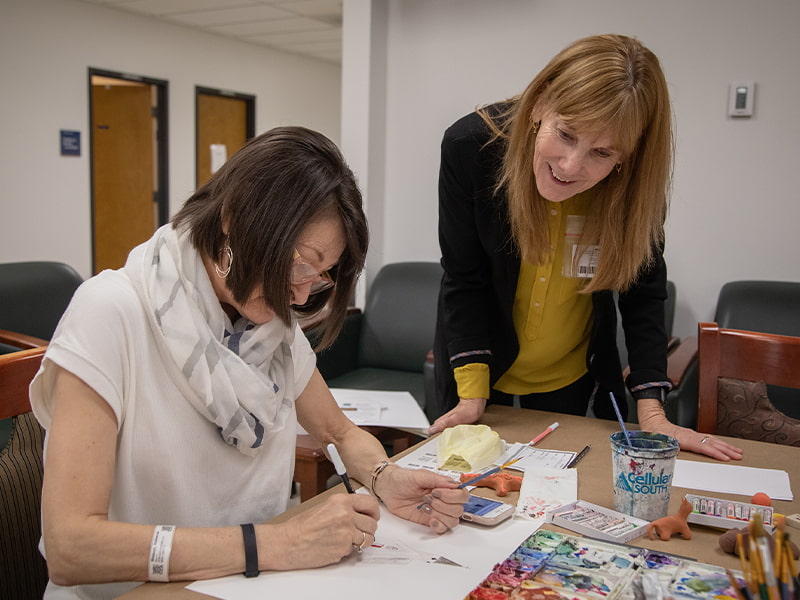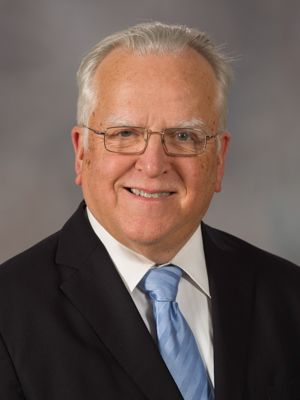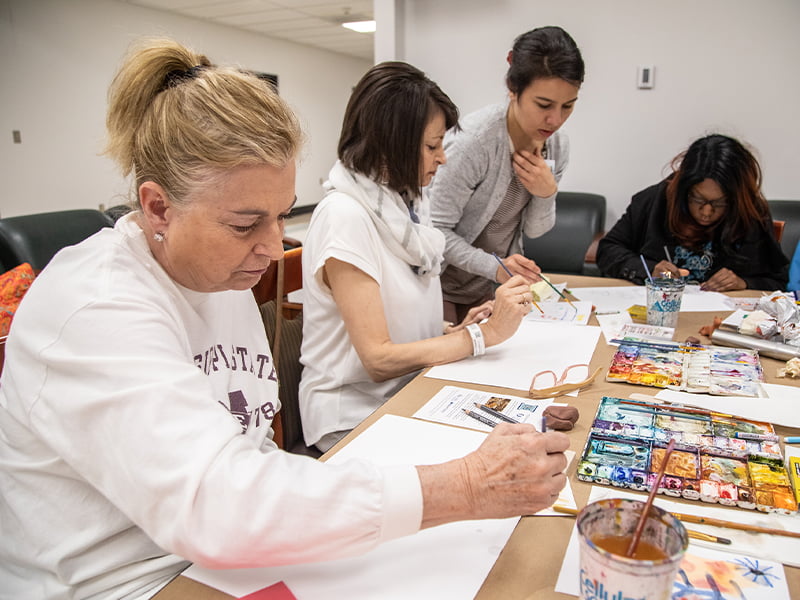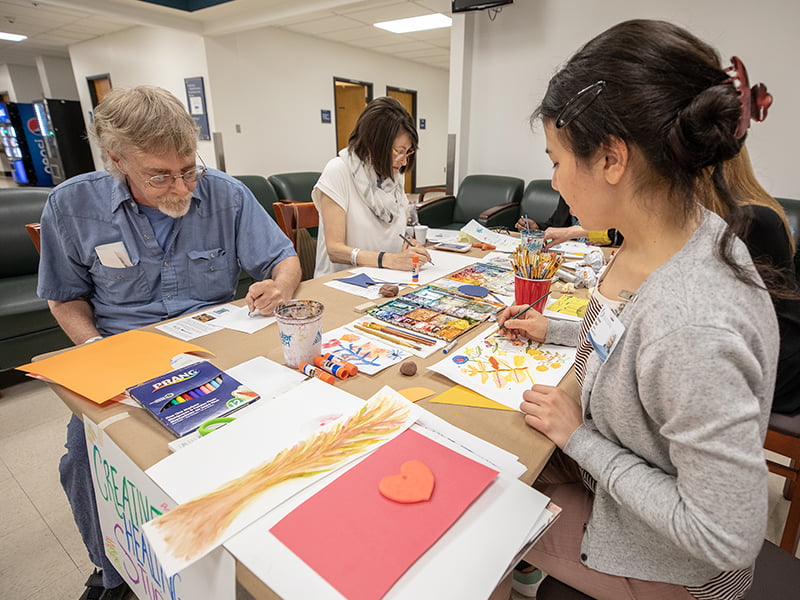Mississippi museum brings the arts to adult cancer patients at UMMC

Bringing arts to a cancer clinic opens hearts, lessens stress and starts conversations, say advocates of arts in healing.
This past week the Mississippi Museum of Art Creative Healing Studio came to the University of Mississippi Medical Center outpatient cancer clinic at Jackson Medical Mall.
“This is an ongoing art therapy group for adults with cancer,” said Susan Anand, an art therapist who works with the Studio and is an instructor in the UMMC Department of Psychiatry.
The goal? Reduce stress, increase self-awareness, self-discovery and self-esteem.
“This lets people express all kinds of emotions and feelings. In a group setting it will help increase social interactions and naturally becomes a support group,” she said.
The Creative Healing Program, offered the first and fourth Wednesdays of each month at the Museum, is for cancer patients and survivors. Bringing it to UMMC Cancer Center and Research Institute patients is new. CCRI is one of the sponsors of the museum program.

“We hope that this new addition to our services will enhance the experience that our patients undergo,” said Dr. John Ruckdeschel, CCRI director and a lung cancer specialist.
“We don’t expect an impact on the quantity of life but certainly do expect an enhancement in quality of life,” he said.
“Our hope is that as people are waiting for their appointments, or even family members, can come over to the table and use the materials to express something on their mind or anything they want to express,” Anand said.
It seemed to work.
Rebecca Watson of Flowood said she welcomed the diversion.
“I wish we had more opportunities because I sit for so long,” she said. “It breaks up the time here.”
Watson, who is being treated for myelofibrosis, a type of bone marrow cancer, worked steadily on a small clay cross and then began drawing a country church she plans to complete on the next arts visit in May.

Sandra Jenkins, a sickle cell patient from Greenville, talked about her family, her church and her faith as her hands roamed over a picture of her home, her yard and her child.
Some patients explored but hesitated to join. Others were eager.
Barbara Jackson of Crystal Springs came to the clinic with her husband, Tommy, who is being treated for myelodysplastic syndrome, and tried watercolor for the first time.
“This gave me a chance to get my mind off what we’re doing here today,” she said. “I love a challenge. I like working with my hands.”
Her husband, awaiting his chemo agreed. “It’s nice to have something for the caregivers to do. The cancer patients have got something to do. Barb likes to keep busy.”
Barbara Jackson said she enjoyed the interlude but is unlikely to take up painting immediately.
“I’ve got my hands full right now,” she said, glancing at a small red heart she sculpted now drying on paper. “But one day I would like to learn how to sculpt.”

Jerry Dragovich of Lake, a prostate cancer patient, eagerly approached the table, and started on a cartoon, his specialty.
“I’ve been working in art for 50 years,” he said. “Mom’s family was artistic.”
Dragovich, who has worked in construction and as a carpenter, moved to Mississippi to help his brother remodel a house “and then I got cancer.” He describes his home as “like a museum, covered with cartoons.”
He said he’s never worked as a cartoonist, but has a sold a few. “I’m not very good with deadlines.”
Now he doodles for pleasure, even making some cartoons for his physician’s daughter to color.
At home, he sometimes scans his pen and ink creations and paints them on the computer.
Head bent, pencil in constant motion, he eagerly described how he’s used his work to fill the walls of his home.
Museum staffers, McKenzie Drake, assistant curator of public programs and community engagement, and Victoria Meek, associate curator of studio and family programs, encouraged patients and caregivers to participate.
“I’m so excited to try this,” Drake said. “It’s the first time it’s not been at the museum.”
This program provides a fit for non-artists as well as accomplished ones, she said.
Meek worked the table, providing materials, offering tips and demonstrating techniques.
“It looks like a tree,” she said to Watson, who paused, paintbrush lifted, raised her eyebrows as she scanned her work.
“Not all trees have leaves,” Drake offered, adding “I love the colors.”
Watson’s face relaxed, as she agreed.
Anand sat by one patient listening as the woman described those closest to her while sketching them into her picture.
The program helps people relax and begin to see themselves as not just a cancer patient but someone who is creative and an artist,” she said. “They start thinking of themselves in a more positive way.”
The Museum volunteers return to the clinic two more times this year and hope even more patients will participate.


